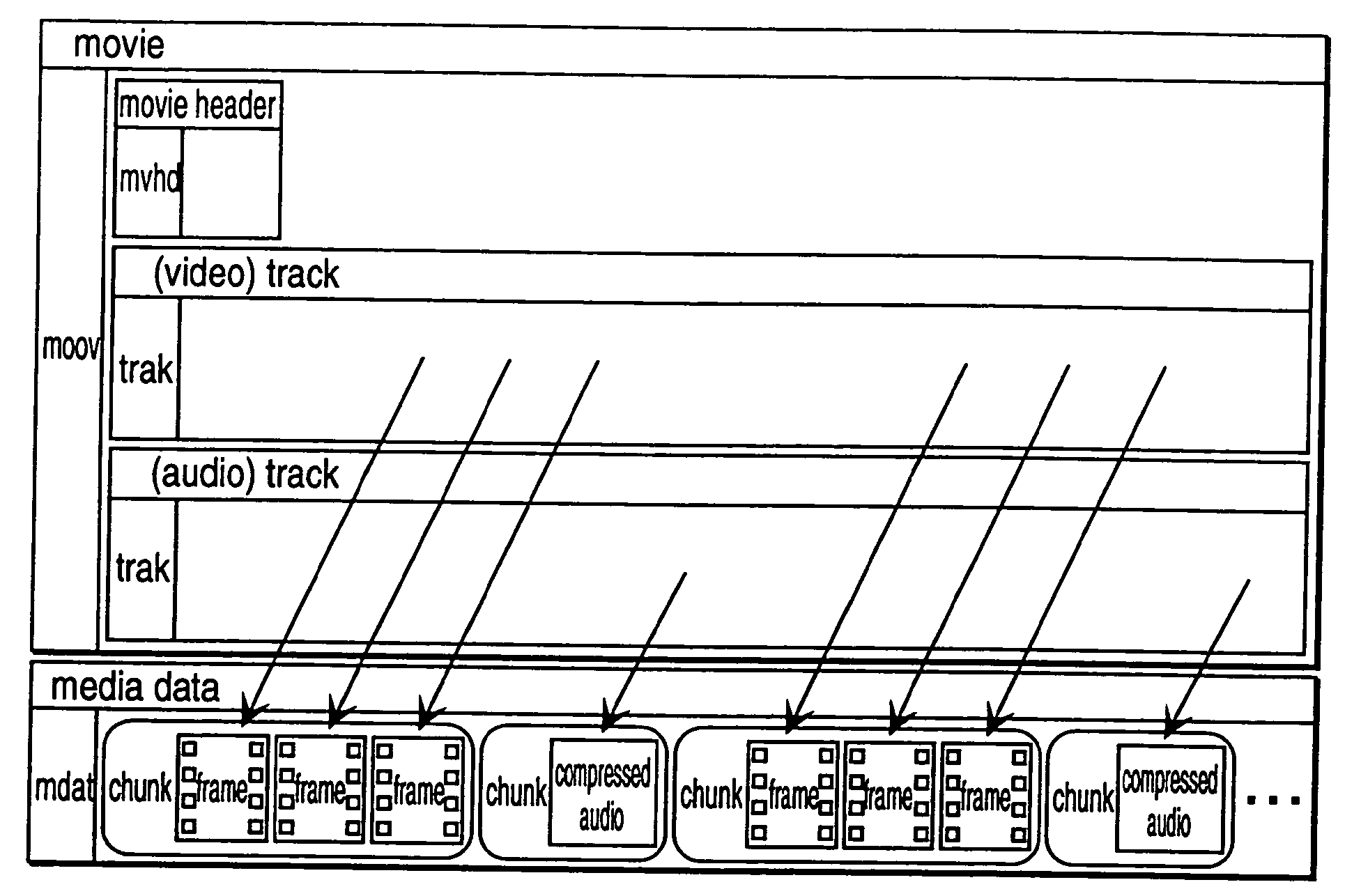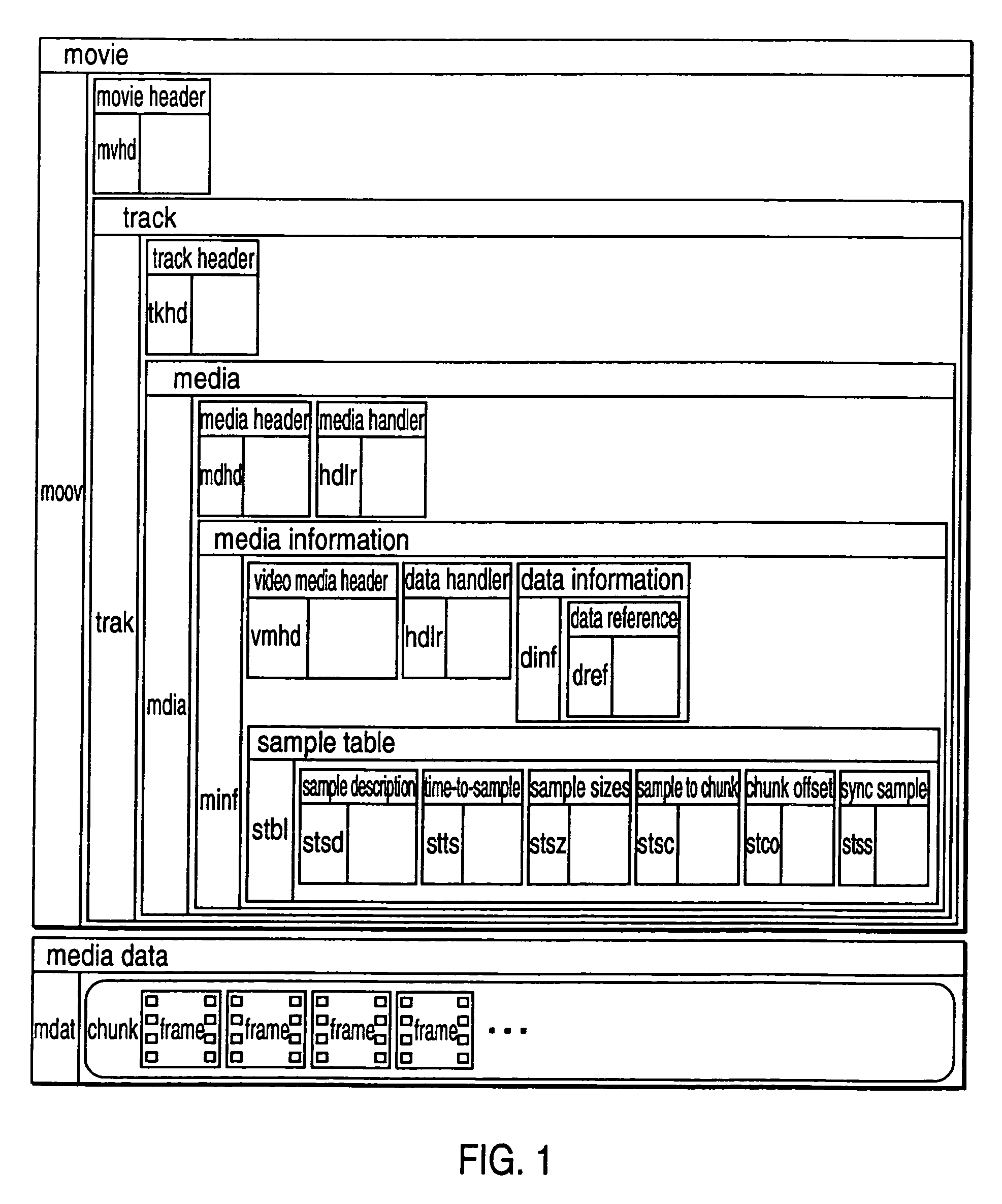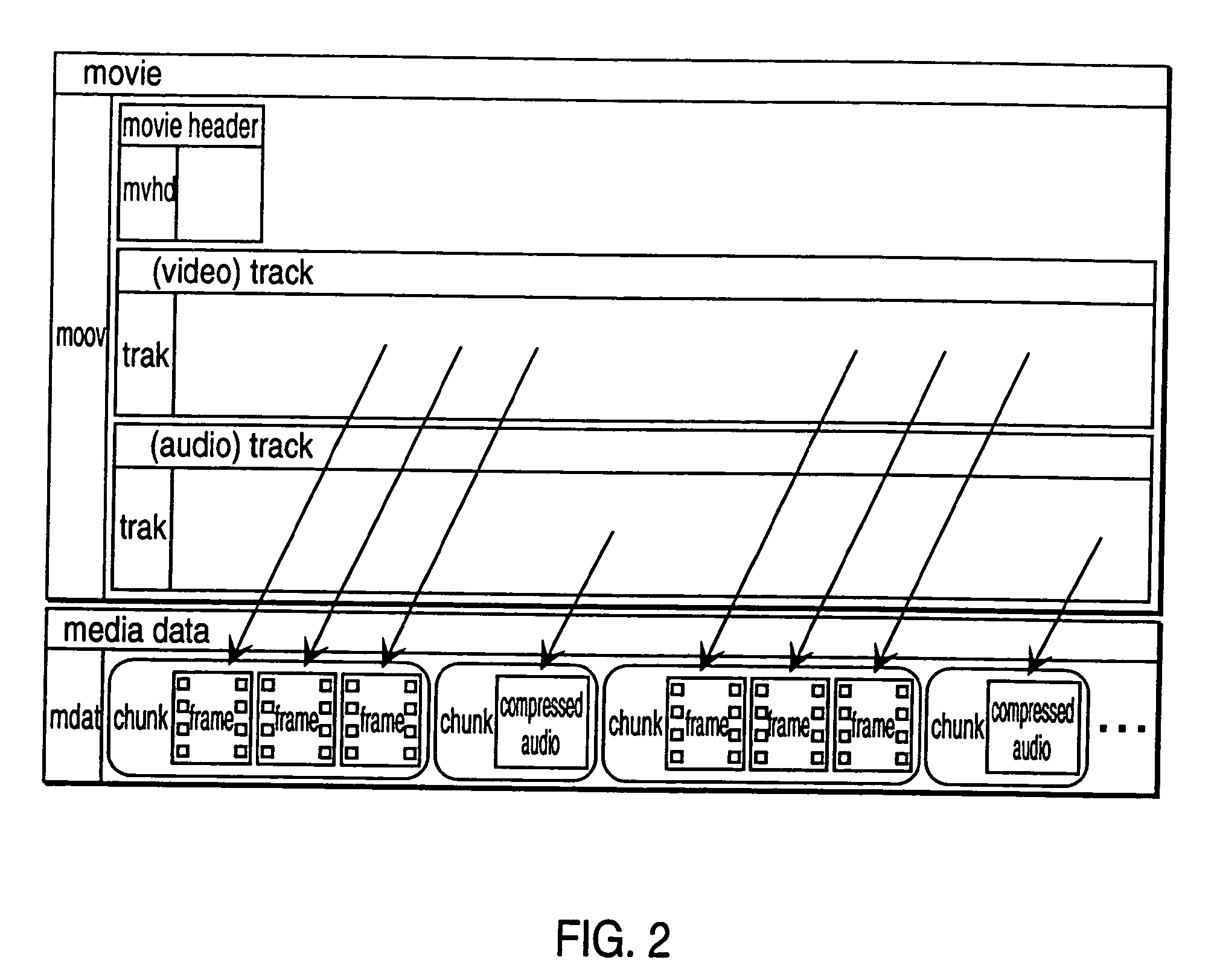Method and apparatus for media data transmission
a media data and transmission method technology, applied in the field of media data transmission methods and apparatuses, can solve the problems of limiting the applicability/compatibility of media data, unable to retain media files at the receiving computing, and time related sequences of media data not being properly packetized
- Summary
- Abstract
- Description
- Claims
- Application Information
AI Technical Summary
Benefits of technology
Problems solved by technology
Method used
Image
Examples
example hint
Track Format for MPEG-2 Transport
[0257]This section presents one example of a simple track format for streaming MPEG-2 transport from a QuickTime movie holding elementary streams.
[0258]An MPEG-2 transport stream is associated with a multiplex of one or more elementary streams. For this reason, an MPEG-2 transport hint track describes how to construct such a multiplex from one or more media tracks. There is not necessarily a one to one relationship between media tracks and MPEG-2 transport hint tracks. Each hint track may contain references to the elementary streams it represents. In one example of the present invention, a QuickTime file might contain multiple such hint tracks to describe different multiplexes.
[0259]Packet size is generally not an issue, since all MPEG-2 transport packets are 188 bytes in size. In one example of the present invention, each transport packet (in the MPEG-2 transport protocol) contains payload data from one media track. This allows for a relatively simp...
PUM
 Login to View More
Login to View More Abstract
Description
Claims
Application Information
 Login to View More
Login to View More - R&D
- Intellectual Property
- Life Sciences
- Materials
- Tech Scout
- Unparalleled Data Quality
- Higher Quality Content
- 60% Fewer Hallucinations
Browse by: Latest US Patents, China's latest patents, Technical Efficacy Thesaurus, Application Domain, Technology Topic, Popular Technical Reports.
© 2025 PatSnap. All rights reserved.Legal|Privacy policy|Modern Slavery Act Transparency Statement|Sitemap|About US| Contact US: help@patsnap.com



